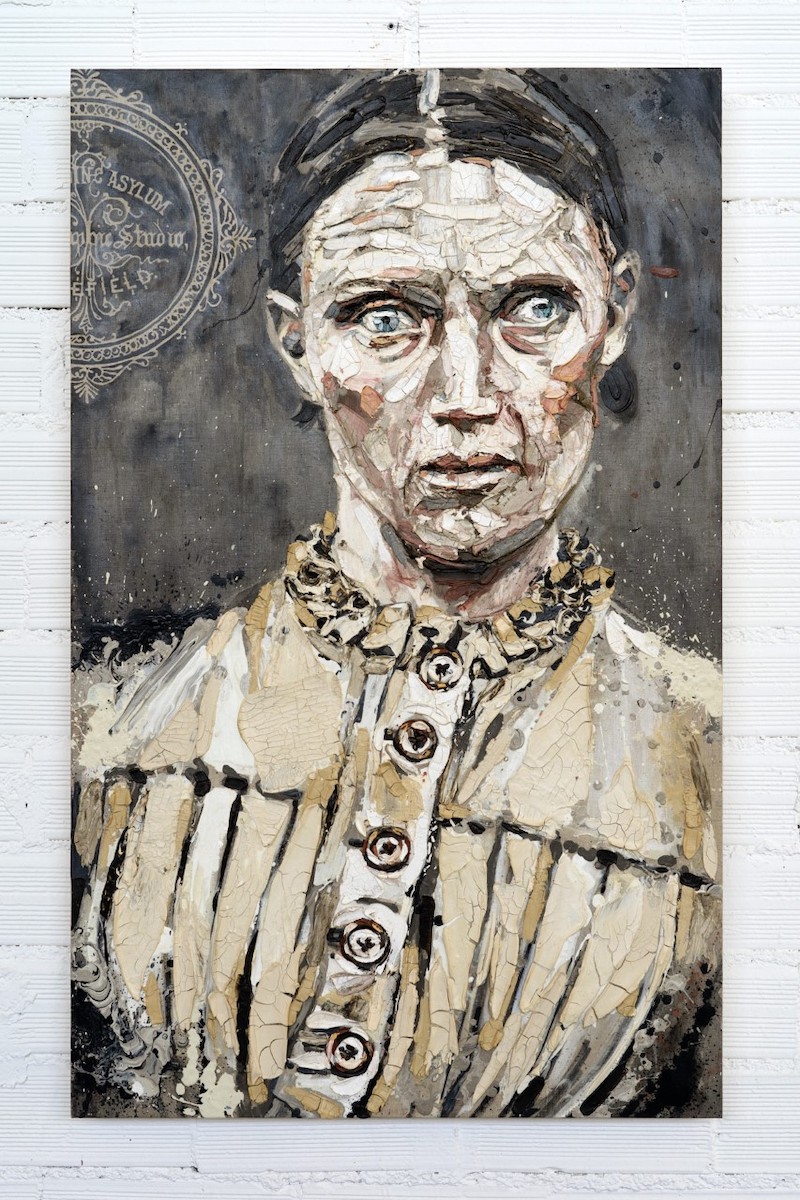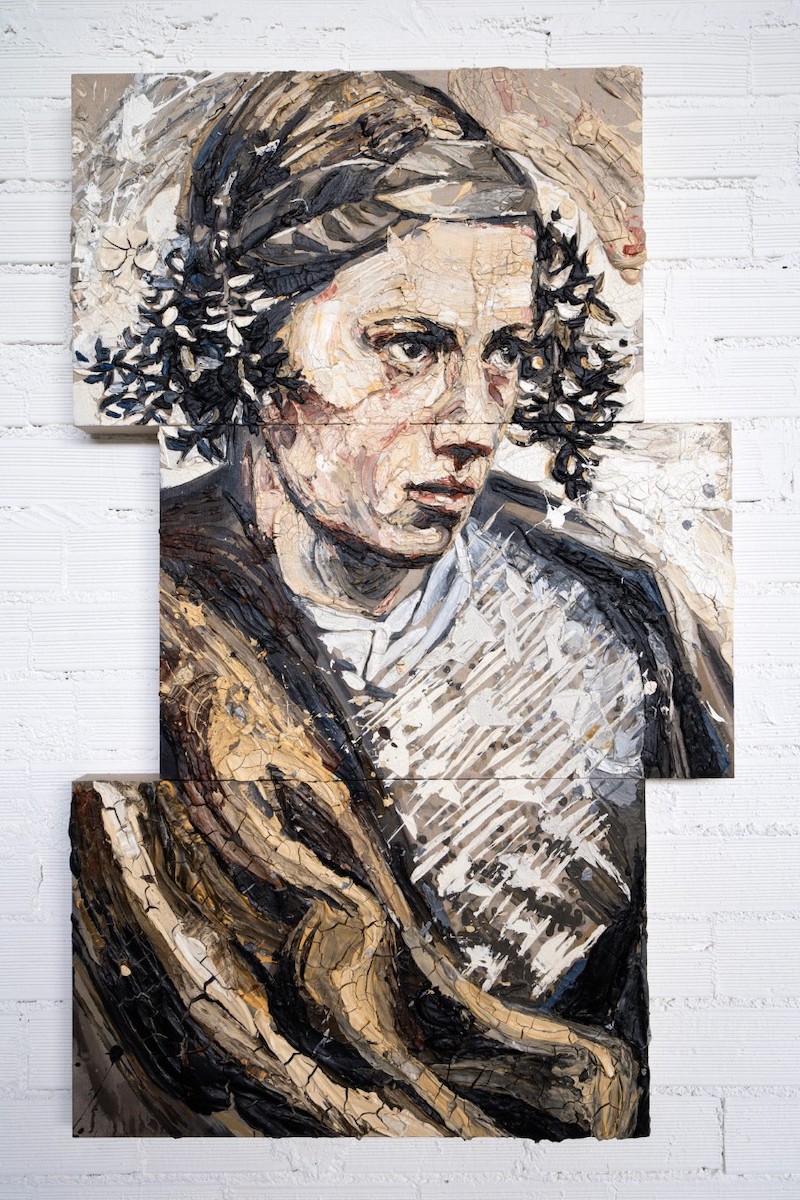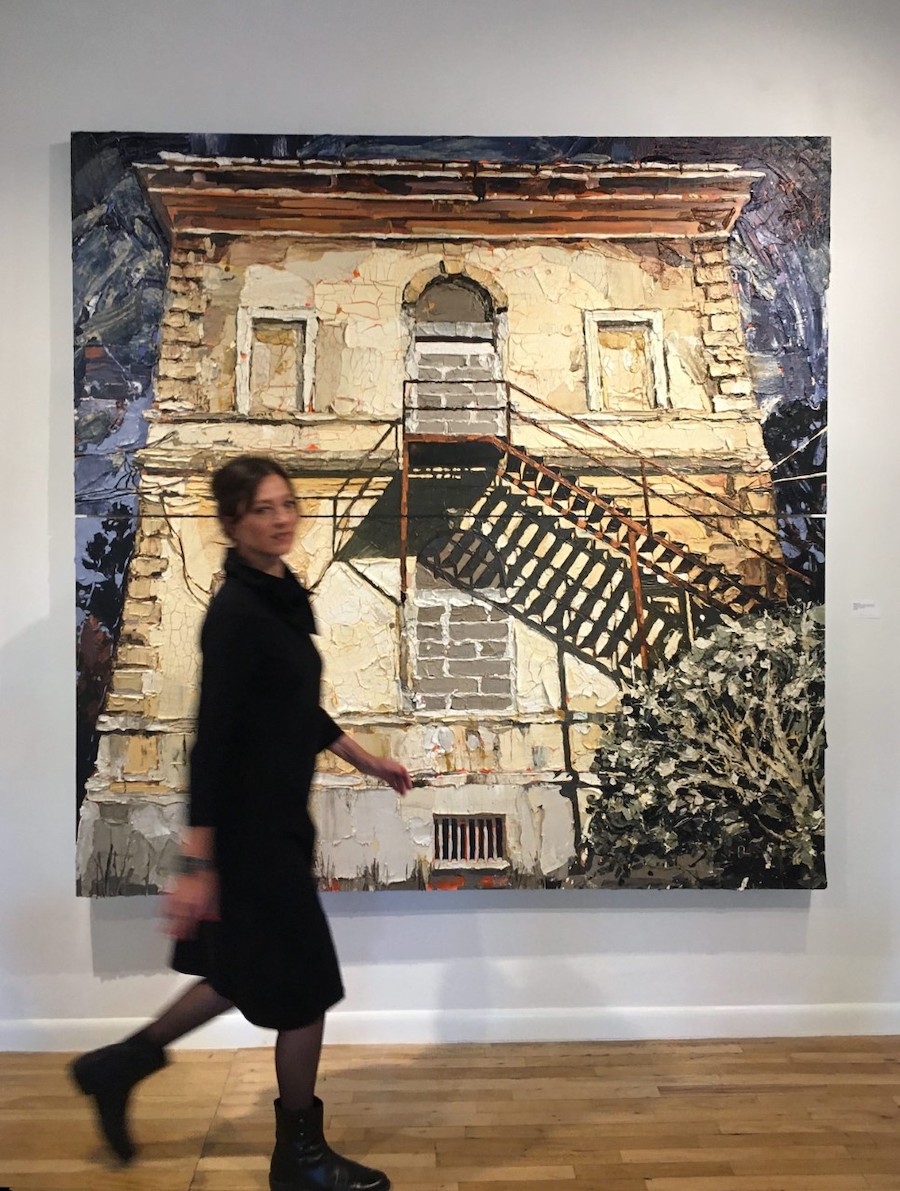“I remember on several occasions when I was a little girl, adults would watch me draw and ask, ‘Are you going to be an artist when you grow up?’” said painter Monica Lundy. “I hated that question. I thought that being an artist would be a terrible career choice.”
She imagined she would become a scientist or biologist. But in the end, she simply did not want to abandon her true creative nature to become something or someone else.
Perhaps that resolve had to do with the contrasting effects of visual milieus in her biography. Born in Portland, Oregon, Lundy moved to Saudi Arabia when she was eight years old. She subsequently traveled around the world, experiencing diverse cultures.
As a small child, Lundy’s parents would keep her occupied while they worked by putting her on the floor of their home office, surrounded by crayons, colored pencils, pens, and paper. When she began drawing on the walls, her father lined them with butcher paper so she could draw to her heart’s content.

When she was a teenager, she attended Idyllwild School of Music and the Arts in Los Angeles, a boarding school for young artists. Following that, she moved again to study at the School of the Art Institute of Chicago, receiving her BFA in 1996. In 2001, Lundy spent a year in Florence, Italy, studying at Studio Art Centers International before landing in the Bay Area—the place where she has lived the longest in her entire life.
Lundy is inspired by challenges. In her studio practice, she draws inspiration from rare historic images, which she finds through extensive travels to archives and museums around the globe. The process serves as pilgrimage, to get closer to her subject matter, and has included a deep dive into San Francisco history, with Lundy portraying its sex workers, and people throughout history who have been incarcerated on Alcatraz and in San Quentin.
“There is a special connection that happens on-site that simply does not happen online,” said Lundy. “Talking with archivists and learning about different histories really ignites my curiosity and passion about the work.”
That historical curiosity is echoed in her methods and techniques. Her intuitive artworks, rendered in muted tones resembling old sepia-tinted photographs, have utilized coffee, burned paper, terra cotta clay, and white gold. They capture a feeling of a fading history once left in the shadows.

The artist is also motivated by conversations with other creatives, writers, and historians—most notably her former mentor and beloved friend Hung Liu, who passed in August. Both Lundy and Liu have created work that digs deeper into hidden stories from the past, exploring the world that has emerged from those often-tumultuous histories. Theirs was a shared fascination.
“I initially met her as my professor at Mills College where I began the MFA program in 2008, specifically to study with her,” said Lundy. “We spent so much time together talking about life, art, and inspiration. For both of us, the key to inspiration is a process of searching and maintaining an open curiosity about life and history.”
Lundy’s inquisitive and experimental practice begins with ample time spent reflecting on source material, a process that, minute by minute, is equal to the time she actually spends painting. Up until four years ago, she worked exclusively from her studio in Oakland. But in 2017, during a residency at the American Academy in Rome, she fell in love with Italian life. Lundy now has two additional studios in Italy: a gigantic warehouse space in the Pordenone agricultural region north of Venice where she does large-scale, multiple panel installations, and a second studio in Rome’s Prati district, the historic heart of the city that lies close to the Tiber River, Spanish Steps, Piazza Navona, and the Vatican.

“Situated between a music school and a church, there is often beautiful piano or choral music drifting in through the windows,” she said. “And I cherish a routine walk to the art store that takes me right by the Pantheon and Bernini’s statue, ‘Elephant and Obelisk.’”
She is also considering opening a studio on her family’s farm in Santa Barbara’s Los Padres National Forest. Through having multiple studios, Lundy can indulge in her passion for travel while she continues to work.
Interested in cultural and societal perceptions that surround figures who have existed on the periphery, Lundy explores how perceptions evolve over time. Just walking down a street can be an opportunity to perceive color, composition, and history.
The pandemic has shifted Lundy’s work in subtle ways. In beforetimes, her paintings almost entirely consisted of portraiture. During the outbreak of COVID-19, she began thinking more about the spaces one inhabits: architecture, interiors, gardens. Each space, she realized, has its own personality, history, and mysteries.
Lundy recently began a new series of liquid porcelain and mixed media paintings that she refers to as “Portraits of Place,” which consist of psychologically-charged landscapes, including the exterior and interior spaces of abandoned psychiatric hospitals. Additionally, she is working up small “painting sketches,” formal studies for what will become larger, multi-panel painting installations.
Her most recent exhibitions include a solo show at Turner Carroll Gallery in Santa Fe titled “Physiognomy of the Abandoned,” and an installation in Rome of a 72-hour, site-specific exhibition curated by Giuliana Benassi titled “There is No Place Like Home / Rome.” Her work is represented by Turner Carroll Gallery and Nancy Toomey Fine Art.
For more information, visit her Instagram page or www.monicalundy.com.





